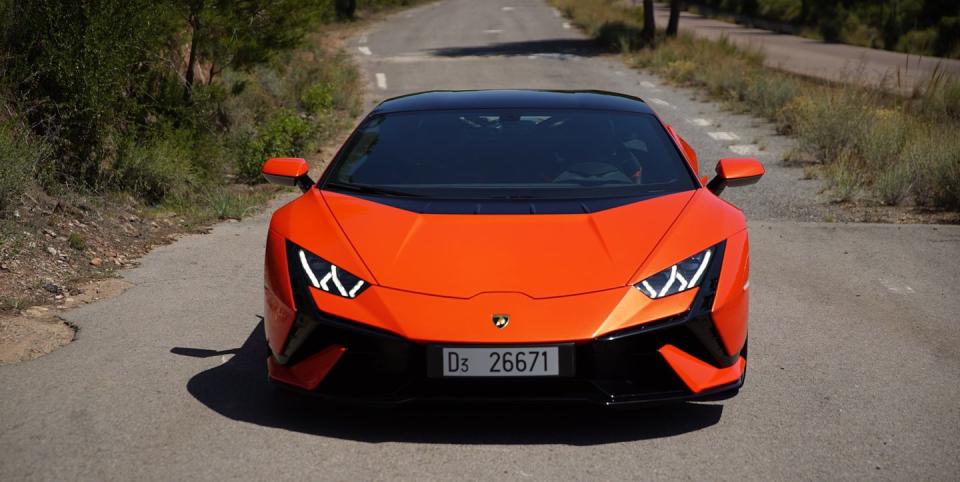The Lamborghini Huracán Tecnica Is an STO For the Sane

The Lamborghini Huracán STO was a dark horse at our Performance Car of the Year event last September. Most judges knew immediately there was no way it could win. It was just too harsh on the road and a bit too ridiculous to look at. But on the track (and a few select slices of smooth, wide-open pavement on the street), it was magic. A driver’s car for those who know what they’re doing. A car with no reservations about what it claims to be, one that doesn’t take prisoners. The best-driving Lamborghini in years.
That is, until the Huracán Tecnica. It’s the latest (and possibly last) evolution of Lamborghini’s entry-level V-10-powered supercar, aiming to fill the gap left by the STO by offering the same breathtaking performance and feedback while also being far more like a normal car on the road. The result is the most complete, most satisfying car the Italian carmaker has ever produced.
The Tecnica retains the STO’s drivetrain but eschews the racy clamshell bodywork in favor of more pedestrian metal. Gone are the big wing and the engine bay scoop, replaced by a lightly reworked version of the panels you’d find on the Huracán Evo. The biggest change comes to the fascia, where the company’s new Y-shaped accent complements the area around the headlights. Changes have also been made to the intake areas, the rear end, and the engine cover, which is now a carbon fiber piece.

That half-mast wing might look a bit out of place, but rest assured, it’s there for a reason. Early Tecnica prototypes had no wing at all, director of vehicle development Victor Underberg told Road & Track. Those cars would lose stability in the rear through high-speed corners, so the wing was added to keep the back end in check.
The underbody has been significantly reworked too, improving both downforce and braking performance. While the Tecnica can’t match the STO’s downforce numbers, it’s up 35 percent over the rear-wheel-drive Evo. Brake disc temps are down seven percent, while pedal elongation—the distance the brake pedal physically has to travel as the brakes heat up—is down by five percent, according to Lamborghini.
If the STO is a Huracán turned up to 11, the Tecnica is a 9 or a 10. On Circuit Ricardo Tormo, just outside of Valencia, Spain, the 5.2-liter naturally aspirated V-10 is still the star of the show, delivering the same 631 hp and 417 lb-ft of torque to the rear wheels via a seven-speed dual-clutch auto. Not even the best modern turbo engines can match the excitement you get from kicking through gears as this motor climbs to its 9000-rpm crescendo. It’s not just the sound either—power delivery is so precise and linear that you wonder why anyone would even consider the equivalent McLaren or Ferrari.
But the drivetrain isn’t what’s new in the Tecnica. Adjustments to the suspension, aero, and steering mean this car drives differently on track versus the STO. It’s less knife-edged and easier to approach at the limit, yet it doesn’t lose that inherent balance that made the STO so satisfying to wheel quickly. Ultra-quick, fixed-ratio steering combined with the same Bridgestone Potenzas as the STO offer mountains of grip and confidence through faster bends and corner exits. That adjustability on corner entry is still here, too, thanks to four-wheel steering and torque vectoring, which brakes the inside wheel as you begin to turn. When the rear does break away, you’ll know long before you get into any trouble.

 Yahoo Autos
Yahoo Autos 